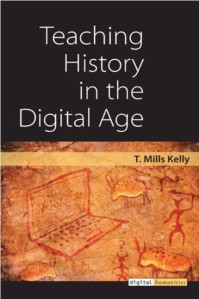Although capture technologies show promise, pulling CO2 out of the air is unlikely to reduce greenhouse gas concentrations soon


AIR CAPTURE: Could this plastic embedded with resin help draw down atmospheric concentrations of carbon dioxide? Image: ? David Biello
-

Showcasing more than fifty of the most provocative, original, and significant online essays from 2011, The Best Science Writing Online 2012 will change the way...
Read More??
Carbon dioxide levels in the atmosphere have touched 400 parts per million for the first time in at least 800,000 years. The jagged saw-toothed line of the Keelings' father-and-son measurements climbed above that milestone briefly this month before the budding growth of the Northern Hemisphere's spring began sucking CO2 back out of the sky. But human greenhouse gas pollution looks set to continue to rise?and photosynthetic plants on land or at sea can only do so much. As greenhouse gas levels increase further, could machines help wash the skies of the excess CO2?
On an early spring day touched with the promise of warmth plus the threat of rain, I headed up to Columbia University's Mudd Building and the lab of physicist Klaus Lackner, formerly of Los Alamos National Laboratory. His hearty chuckle belies his formal German diction and physicist's habit of obfuscating with numbers. Girding myself for potentially indecipherable jokes, I'm here to see Lackner?s potentially world-saving technology: a plastic resin that can capture carbon dioxide directly from the air.
The resin rests outside a clear greenhouse bearing basil plants, bamboo, a houseplant and cucumbers that glow an eerie purple-red under ultraviolet light. The plants' leaves rustle in the breeze from a Dyson bladeless fan. Next to the big tank, a computer monitor charts CO2 levels and a tube on one side separates the environment within the greenhouse from the outside world. With the UV light on, the plants are busily sucking in CO2 to make leaves, roots and vegetables. "The cucumber got fat on the CO2," Lackner notes and chuckles.

A pale beige polypropylene plastic embedded with 25-micrometer particles of the resin is inserted into the tube in the form of a long-haired shag carpet sample and, almost immediately, CO2 levels inside the greenhouse begin a steady march downward as the resin binds CO2 to form bicarbonate, a kind of salt produced. This type of salt, more familiar perhaps as baking soda when there's a sodium atom involved, holds the CO2. The resin sucks in CO2 even more powerfully than the plants do, as a function of the relative humidity of the material. That makes the process reversible; just add water to get the CO2 back out again.

This is no joke. A polycarbonate plastic bottle used to store some of the resin ended up scarified. "They broke the plastic," Lacker says of his lab co-conspirators, showing me the streaked, cloudy, hard plastic bottle. The resin pulled CO2 out of the polycarbonate in its vigorous quest for chemical equilibrium.
Lackner calculates that more than 700 kilograms of CO2 passes through an opening the size of the door to this lab over a 24-hour period when the wind is up, courtesy of another Dyson or just a windy building top. That's how much a sheet of this material might pull from the air. Or it could be refashioned into a brushlike or folded checker configuration, exposing more of the resin.
Of course, 700 kilograms of CO2 only equals the breath of 13 people for one day and night. There would need to be a lot of these resin machines to make a significant impact on pulling this trace greenhouse gas out of the atmosphere to lower atmospheric concentrations; Lackner estimates 10 million such artificial ?trees? would be required to drop atmospheric concentrations by 0.5 ppm per year. Each machine would require roughly 1.1 megajoule of electricity for pumping and compressing per kilogram of CO2 captured. That's not to mention all the water required to wet the filters (and evaporate) in order to get the CO2 back out again so the resin can be re-used to capture yet more CO2. The compressed and captured CO2 can then either be used for industrial purposes, like enhanced oil recovery to improve the economics of all this, or buried deep beneath the surface of the planet. In other words, a vast industrial infrastructure of air-capture machines would be required to remedy the effects of our vast, industrial infrastructure for fossil fuels.
Just how the resin operates is the focus of the other experiment in this lab. Hidden inside a Styrofoam cooler?with a dark blue Columbia necktie as de facto latch?the resin is exposed to water and CO2 and precisely weighed while temperature is kept constant. The idea is to keep CO2 steady at 400 ppm with no temperature variation and then change the conditions to determine how well the resin works.
Source: http://rss.sciam.com/click.phdo?i=7296ea383c76f8dd8c96546048b7499a
sturgis whitney houston laid to rest daytona bike week mary kay ash tiny houses maya angelou joan of arc

 By Lynn Zimmerman
By Lynn Zimmerman